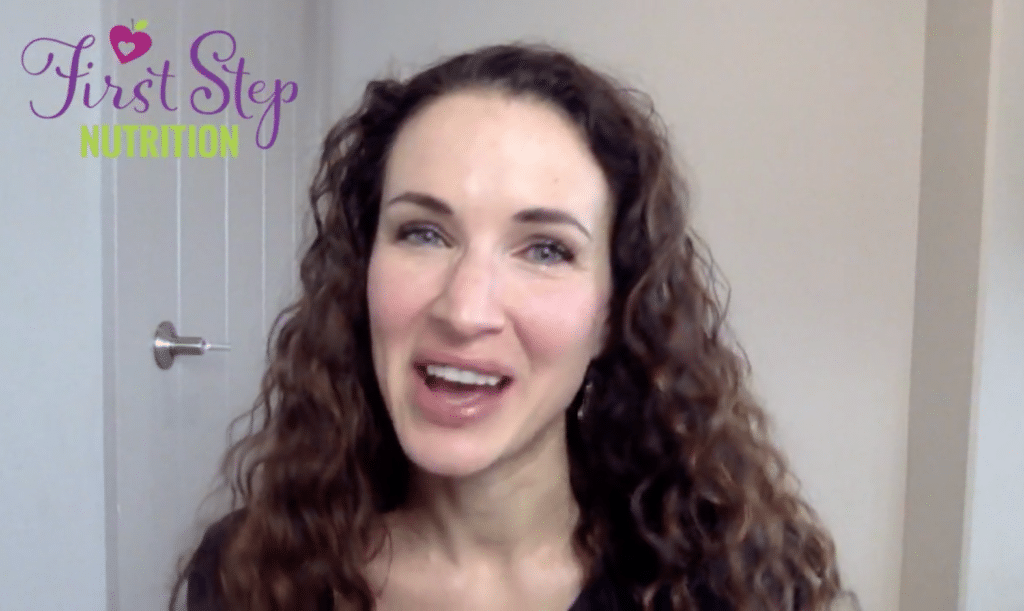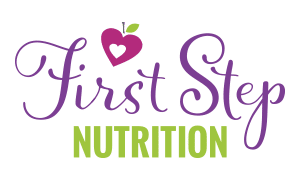
4 Important Nutrients for Kids & Translating that to Meals

Jennifer House MSc, RD & mom of 3 helps make feeding your family easier. Prefer to watch? Check out the Facebook Live here.
Are you worried that your child doesn’t get enough food or nutrients for good health?
If you’re the parent of a young child, this is a common concern. We all just want to raise the healthiest, happiest child possible right?! A piece of this includes your child’s food and nutrition.
In this blog, I’ll discuss what are the most important nutrients for your kiddos to get from food, how much they need depending on age and the best food sources. I will also translate this into food and discuss balanced meals for kids and some healthy snack ideas.
Important Nutrients
IRON
Iron is the most important nutrient that babies need from food, when starting solids. And iron deficiency is no joke. It can lead permanent physical and developmental delays.
I found out when my daughter was 4 years old that she had low iron. Which is a main reason why I now teach parents how to practice Baby-led Weaning safely.
But a lot of babies eat anything you put in front of them. Your toddler or preschooler might be another story! Usually around 18 months, many children will refuse foods they used to love. Or whole food groups like meat or vegetables.
In some cases a supplement or multivitamin may be required. To ease your mind and fill in nutrient gaps. Check with your doctor or dietitian if you’re not sure.
Back to iron – meat contains heme iron, which is the easiest form for our body to use. Sources include bison, beef, dark chicken and turkey (higher in iron than the white poultry), pork and fish,
Non-heme iron is also important in our diet, although not absorbed as well by our bodies. Sources include tofu, beans and legumes, eggs, hemp hearts, spinach or anything that’s fortified like pasta and cereal.
To increase the iron absorption from non-heme iron food sources, serve them with a Vitamin C source. So a fruit or a veggie. These often go well together anyways, like cereal with berries or a smoothie with spinach and tofu for some iron and fruit for Vitamin C.
See the chart below for a summary of each nutrient.
OMEGA-3
Omega -3 is needed for brain and eye development. It’s a healthy fat that is found in fish, walnuts, flax, and canola.
Fish is the best source of omega-3, as it contains DHA (docosahexaenoic acid) and EPA (eicosapentaenoic acid). These are the types of omega-3 that are most useful for our bodies. Or algae is another option, if you’re a vegetarian family. Fish is actually high in omega-3 fats because they eat algae!
ALA (alpha linolenic acid) is the type of omega-3 found in the other sources like canola, flax, walnuts.
VITAMIN D
Vitamin D is thought to possibly help prevent certain cancers and autoimmune disease like diabetes and Multiple Sclerosis.
Vitamin D can be found in foods such as fatty fish, mushrooms and milk (which is fortified). But dietary sources don’t contain enough.
Everyone in your family should take a Vitamin D supplements (not just breastfed babies!). Especially from March to October in the north, where due to sun position, we just don’t make Vitamin D with sun contact to the skin.
And if you wear sunscreen throughout the summer (as dermatologists recommend) this also blocks our skin from making Vitamin D naturally from sun contact. So you may want to supplement all year long.
CALCIUM
Calcium works with Vitamin D to build strong bones and teeth. Which is so important for your kids. Especially as teenagers, when they are growing so fast and laying down bone mass they will need for the rest of their lives.
Dairy products like cheese and yogurt contain about 300 mg of calcium per serving. So do fortified alternatives like almond or soy milk.
Calcium-set tofu, kale, turnip greens and bok choy also contain calcium. They’re not likely to be accepted by most selective little eaters though! And while some veggies are high in calcium, many have binders like phytates and oxalates so not well absorbed.
| Nutrient | 7-12 mo | 1-3 years | 4-10 years | adult females |
| Iron sources: meat, tofu & soybeans eggs, l lentils, fortified cereals, hemp hearts, spinach. | 11mg (based on vegetarian diet) | 7mg | 10mg | 18 mg (menstruating)Pregnancy – 27 mg |
| Omega 3 sources: fish or algae | 700mg | 700mg | 900mg | 1200mgpregnancy – 300mg DHA |
| Vitamin D sources: fatty fish, mushrooms. supplement | 400 IU | 600 IU | 600 IU | 600 pregnancy -2000 IU |
| Calcium sources: Dairy (1 serving = 300mg), Kale, turnip greens and bok choy, calcium set tofu, white beans, fortified dairy alternatives | 260mg | 700mg | 1000mg | 1300mg |
Healthy Snacks for Kids
Now you know how much of some important nutrients your kiddos need and where to find them. But single nutrient recommendations aren’t that helpful. How does this translate into real food? How can you offer your child a balanced diet, so they’re getting all of the nutrients they need?
For snacks, choosing two foods from different food groups will ensure your child will be more likely to meet their nutrient needs. For example, instead of crackers + a granola bar, offer crackers with peanut butter.
I also prefer one of these two snack foods to contain some protein, to keep your child feeling full for longer. This could be yogurt, cheese, boiled eggs, nuts or nut butter, hummus or beans. Read my blog about kids and protein here.
Here are a few more simple, balanced snack ideas:
– crackers and cheese
– apple and peanut butter
– cereal with milk
– toast with nut or seed butter
– veggies and hummus
– yogurt and berries
– Smoothie: frozen fruit, dairy or alternative & yogurt blended. Add-ins: All-Bran buds, oats, hemp, chia or flax seeds, flax oil, skim milk powder, pasteurized eggs, nut butter, tofu.
Balanced Meals for Kids
For meals, aim to offer at least 3 different food groups. I’m thinking old Canada Food guide style for food groups: meat/alternative, fruit/veggie, dairy/alternative and grains.
Again, this will ensure that you’re offering a good variety of nutrients. And can be simple! Here are a few easy dinner ideas:
– Spaghetti with tomato lentil or meat sauce
– Veggie stir fry with chicken or tofu on rice
– Tacos with ground beef and veggies as toppings
– Vegetable bean soup with bread.
Add a glass of milk (or a fortified alternative if your child is 2 years or older), and you have 4 food groups!
Of course, just because you offer a balanced diet certainly doesn’t mean your kid will choose to eat it! Keep in mind that these are just foods you are offering them to eat. Your child decides how much of these foods they eat – without your pressure, bribes or rewards!
If you have challenging dinners struggling to try to get your kids to eat, check out my free training, “How to teach kids to try new foods without struggles at dinnertime“
Jennifer House is a Registered Dietitian, author & mom of 3. From Baby-led weaning to picky eating and meal planning, she helps you to make feeding your family easier.
Founder of First Step Nutrition | Registered Dietitian Nutritionist
Jen believes raising happy, well-nourished eaters who have a healthy relationship with food doesn't have to be a battle! She is an author and speaker with 18 years of experience specializing in family nutrition and helps parents teach their kids to try new foods without yelling, tricking, or bribing.






Sorry, the comment form is closed at this time.